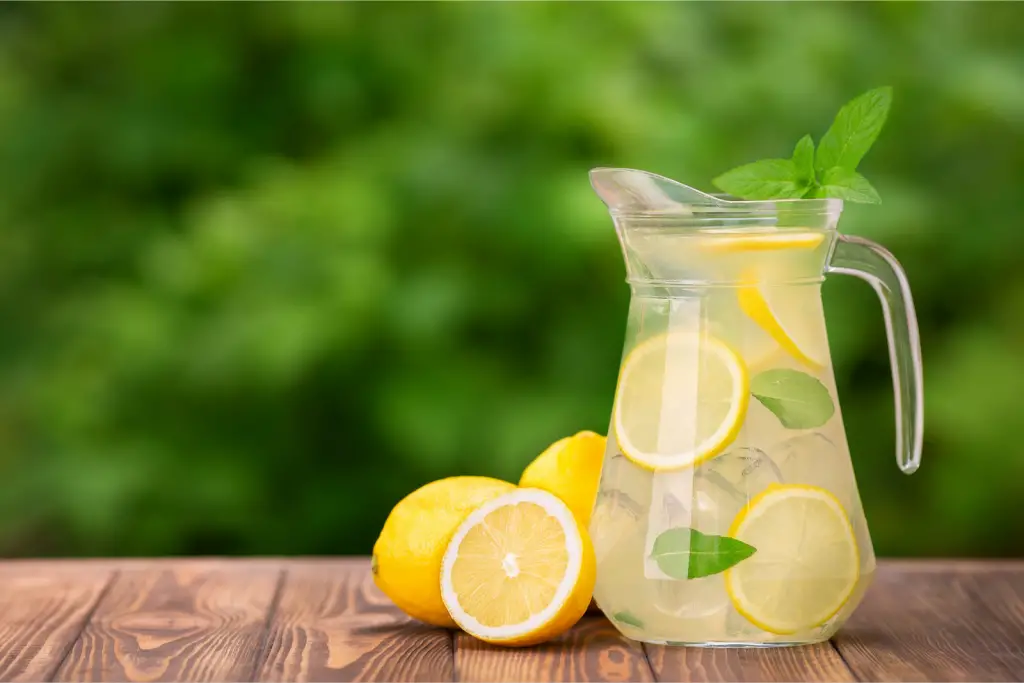
Cider is a delicious and refreshing beverage made from fermented apple juice. Whether you’ve made a large batch of homemade cider or bought a surplus of your favorite store-bought brand, freezing cider can be a convenient way to preserve its flavor and enjoy it at a later time. Freezing cider is a simple process that ensures you can have a taste of autumn all year round. In this article, we will guide you through the step-by-step procedure of freezing cider while maintaining its quality and taste.
Here’s a guide on how to freeze cider:
Step 1: Choose fresh cider
To freeze cider successfully, it’s crucial to begin with fresh and high-quality cider. The quality of the cider you select will directly impact the taste and overall enjoyment of the frozen product. Fresh cider that is free from any signs of spoilage or fermentation issues is the ideal choice for freezing.
Fresh cider refers to cider that has been recently pressed and is at its peak flavor. Look for cider that is made from ripe, juicy apples and has a vibrant color. It should have a pleasant aroma and a clean taste. Avoid using cider that is past its expiration date or shows any signs of mold, cloudiness, or off-putting odors.
Choosing cider that hasn’t been opened yet is particularly advantageous when freezing. Unopened cider bottles are typically sealed tightly, minimizing exposure to air and preventing oxidation. This helps maintain the freshness of the cider and preserves its natural flavors.
When cider is exposed to air, it can start fermenting, leading to changes in taste, texture, and even potential spoilage. By starting with unopened cider, you reduce the risk of unintentional fermentation during the freezing process.
If you’re using homemade cider, ensure that it has been properly strained and filtered to remove any solids or impurities. Clear cider without any sediments or debris will freeze more uniformly and result in a better texture when thawed.
Is it safe to freeze cider that has been opened but not consumed?
Yes, it is safe to freeze cider that has been opened but not consumed. However, it’s important to transfer the remaining cider into a freezer-safe container or freezer bag, ensuring that it is tightly sealed to prevent any potential contamination. Freezing can help extend the shelf life of the opened cider and maintain its quality for future consumption.
Step 2: Prepare the containers
When freezing cider, it’s important to choose suitable containers that can effectively preserve the cider’s quality and prevent freezer burn. Here’s why selecting the right containers and ensuring they are clean and airtight is crucial:
- Container options: You have several choices for containers to freeze cider, including glass bottles, plastic containers, or freezer-safe bags. Each option has its advantages, so consider your preferences and available resources. Glass bottles are sturdy and provide excellent insulation, while plastic containers are lightweight and less prone to breakage. Freezer-safe bags are convenient for saving space and allowing easy pouring when thawing.
- Cleanliness: Before using any container, make sure it is thoroughly cleaned. Wash the containers with warm soapy water and rinse them well to remove any residue or contaminants. Cleaning the containers helps ensure that no unwanted flavors or bacteria are introduced to the cider during the freezing process.
- Airtight seal: It is crucial to use containers with airtight seals to prevent air exposure and subsequent freezer burn. Freezer burn occurs when moisture evaporates from the cider and ice crystals form on its surface, leading to a loss of flavor and quality. An airtight seal helps maintain the cider’s taste, texture, and overall freshness while it is frozen.
- Size considerations: When selecting containers, consider the amount of cider you want to freeze at once and how you plan to use it later. Choosing containers of appropriate sizes will allow you to conveniently thaw only the desired amount without wasting any cider.
- Compatibility with freezing: Ensure that the containers you choose are labeled as freezer-safe. Not all containers can withstand freezing temperatures, and using unsuitable containers may result in breakage or leakage. Look for containers specifically designed for freezer use to avoid any potential issues.
Can I freeze cider in its original bottle?
Freezing cider directly in its original bottle is not recommended. As the liquid freezes, it expands and can potentially cause the glass bottle to crack or shatter, leading to a messy and unsafe situation. It is best to transfer the cider to a freezer-safe container or freezer bags designed for freezing liquids. Make sure to leave some headspace in the container to allow for expansion during freezing.
Can I freeze cider in plastic containers or bags?
Yes, you can freeze cider in plastic containers or freezer bags specifically designed for freezing liquids. It is important to use containers or bags that are labeled as freezer-safe to ensure they can withstand the freezing temperatures without breaking or leaking. When using plastic containers, leave some headspace to allow for expansion during freezing.
Step 3: Leave headspace
When freezing cider, it is essential to leave some headspace at the top of the containers before sealing them. Headspace refers to the empty space between the cider and the container’s lid or closure. Here’s why leaving headspace is crucial:
- Expansion during freezing: Cider, like most liquids, expands when frozen. As the temperature drops, the water molecules within the cider form ice crystals, causing an increase in volume. If the containers are filled to the brim without any headspace, the expanding cider can exert pressure on the container walls, leading to potential bursting or leakage.
- Prevention of container damage: Leaving sufficient headspace allows the cider to expand freely during freezing without causing any harm to the container. Glass bottles, plastic containers, and freezer-safe bags all have limits to the amount of expansion they can withstand. By leaving headspace, you provide room for the cider to expand without putting excess strain on the container walls.
- Preservation of quality: Allowing the cider to expand without constraints ensures that it maintains its quality during the freezing process. If the containers burst or leak due to insufficient headspace, it can result in exposure to air, leading to freezer burn and potential loss of flavor and texture. Adequate headspace helps protect the cider’s taste and overall integrity.
- Easy handling and pouring: Leaving headspace also facilitates easy handling and pouring when you eventually thaw the cider. The extra space at the top of the container allows you to shake or stir the cider without spillage. It also provides room for any expansion that may occur during the thawing process.
To determine the appropriate amount of headspace, leave about 1 to 1.5 inches (2.5 to 3.8 centimeters) at the top of the containers. This measurement can vary slightly depending on the container’s size and the amount of cider you’re freezing. It’s better to err on the side of caution and leave more headspace than to risk overflowing or bursting containers.
Step 4: Seal the containers
After pouring the cider into the chosen containers and leaving the appropriate headspace, the next step is to securely seal the containers. Whether you’re using bottles, plastic containers, or freezer bags, it is essential to achieve an airtight closure. Here’s why sealing the containers properly is crucial:
- Preservation of freshness: Airtight sealing is essential to preserve the freshness, taste, and quality of the cider during freezing. By preventing exposure to air, you minimize the risk of oxidation, which can lead to flavor deterioration and the development of off-putting odors. A tight seal helps maintain the cider’s original aroma and flavor profile.
- Prevention of freezer burn: Freezer burn occurs when moisture evaporates from the cider, resulting in the formation of ice crystals on its surface. This can lead to a loss of flavor, texture, and overall quality. A proper seal minimizes the risk of freezer burn by reducing air circulation around the cider and maintaining a consistent temperature within the container.
- Avoidance of contamination: Sealing the containers securely also helps prevent contamination from external sources. It keeps out any odors, flavors, or potential contaminants present in the freezer or refrigerator, ensuring that the cider retains its authentic taste.
- Removal of excess air (for plastic containers or freezer bags): If you’re using plastic containers or freezer bags, it’s important to remove excess air before sealing. Excess air can contribute to freezer burn and degrade the quality of the cider. Squeeze out as much air as possible from the bags before closing them tightly. For plastic containers, press the lids firmly to create a tight seal.
- Capping tightly (for bottles): If you’re using glass bottles, make sure to cap them tightly to create a secure seal. A loose or improperly sealed cap can allow air to enter the container, compromising the cider’s quality.
When sealing containers, ensure that no liquid or residue is present on the sealing surfaces. Wipe the rims of bottles or containers clean and ensure that any closures or lids are free from any debris that could prevent a proper seal.
Step 5: Label and date the containers
When freezing cider, it’s important to label each container with the date of freezing. This simple step helps you keep track of the storage time and ensures that you consume the cider within a reasonable timeframe. Here’s why labeling and dating the containers is crucial:
- Storage organization: Labeling the containers allows you to easily identify the contents and differentiate them from other items in the freezer. It helps you stay organized and prevents confusion, especially if you have multiple types of cider or other frozen items.
- FIFO principle (First In, First Out): By dating the containers, you can apply the FIFO principle, which means using the oldest cider first. This ensures that you consume the cider before it potentially loses its optimal quality. When you’re ready to enjoy the cider, you can quickly identify the containers that have been stored the longest and prioritize their use.
- Quality control: Over time, frozen cider may undergo changes in taste, texture, or overall quality. By labeling the containers, you can monitor the cider’s storage duration and make informed decisions about when to consume it. It allows you to maintain a high standard of taste and ensure that you enjoy the cider while it is still at its best.
- Avoiding waste: Properly labeling the containers helps you keep track of the cider’s storage time, preventing it from remaining in the freezer for an extended period and potentially going to waste. By being aware of the dates, you can plan your consumption accordingly and avoid unnecessary food waste.
When labeling the containers, use a permanent marker or labels that can withstand freezing temperatures and won’t smudge or fade over time. Clearly write the date of freezing on each container, making it easily visible and legible.
It can be helpful to include any specific details or variations in the cider, such as the type (e.g., apple, pear, spiced) or any additional flavors or ingredients that may be present. This information can be useful if you have different batches or varieties of cider stored.
Step 6: Freeze the cider
After properly sealing and labeling the containers, it’s time to freeze the cider. Here’s how to ensure optimal freezing and maintain the cider’s quality:
- Placement in the freezer: Place the sealed containers in the coldest part of your freezer. This is typically at the back or bottom of the freezer, where the temperature is most consistent. By positioning the containers in the coldest area, you promote faster and more even freezing, which helps preserve the cider’s flavor and texture.
- Freezer temperature: Set your freezer temperature to 0°F (-18°C) or below. Freezing cider at this temperature ensures that it reaches and maintains a safe frozen state, preventing the growth of bacteria and maintaining its quality throughout the storage period. It also helps minimize the formation of large ice crystals, which can affect the cider’s texture.
- Avoid temperature fluctuations: Fluctuating temperatures can negatively impact the quality of frozen cider. To maintain the cider’s integrity, avoid frequent opening and closing of the freezer door, as this can cause temperature fluctuations. Additionally, ensure that the freezer is not overloaded, as overcrowding can obstruct airflow and compromise freezing efficiency.
- Freezing time: The time required for cider to freeze will vary depending on factors such as the container size, the amount of cider, and the freezer’s temperature. Generally, it takes several hours to freeze cider thoroughly. Larger volumes or thicker containers may require more time. It’s recommended to check the containers periodically and ensure they are completely frozen before removing or rearranging them.
How long can I freeze cider in the freezer?
Cider can typically be safely stored in the freezer for up to 6 months. However, it’s important to note that the quality of the cider may degrade over time, so it’s best to consume it within the first 3-4 months for optimal taste. Freezing cider for longer periods can result in flavor changes and potential texture issues. It’s recommended to label the container with the freezing date to keep track of its storage time.
Step 7: Thaw and serve
When you’re ready to enjoy the frozen cider, it’s important to thaw it properly to preserve its flavor and texture. Follow these steps to thaw and serve the cider:
- Transfer to the refrigerator: Remove the frozen cider containers from the freezer and transfer them to the refrigerator. Thawing the cider in the refrigerator is the safest method as it allows for a gradual thawing process, minimizing the risk of bacterial growth and maintaining the cider’s quality.
- Gradual thawing: Thawing the cider slowly in the refrigerator helps retain its flavor and prevents any unwanted changes in texture. The cold environment of the refrigerator ensures a controlled thawing process, allowing the cider to gradually reach its liquid state while minimizing the risk of spoilage.
- Settling of solids: During freezing, some solids or sediments may settle at the bottom of the containers. Once the cider has thawed completely, gently give the containers a shake or stir to redistribute any settled solids throughout the cider. This helps ensure a consistent flavor and texture when serving.
- Serving the cider: Once the cider has thawed and any settled solids have been redistributed, it is ready to be served. Pour the thawed cider into serving glasses or containers of your choice and enjoy its delicious flavor. If desired, you can serve the cider chilled by adding ice cubes or placing it in the refrigerator for a short period before serving.
It’s important to note that thawed cider should be consumed within a reasonable timeframe to ensure its optimal quality. If you have thawed more cider than you can consume at once, consider pouring the remaining cider into smaller containers and refreezing them for later use. However, keep in mind that repeated thawing and refreezing can affect the cider’s texture and taste.
How do I defrost cider?
To defrost cider, there are a few options available. The recommended method is to transfer the frozen cider from the freezer to the refrigerator and allow it to thaw slowly and evenly overnight or for several hours. Alternatively, you can place the sealed container of frozen cider in a bowl of cold water, periodically changing the water until it thaws. Avoid using hot water or a microwave for defrosting, as these methods can affect the quality of the cider. Once thawed, give the cider a gentle stir or shake before serving.
Other related questions
Can I refreeze previously thawed cider?
It is generally not recommended to refreeze cider once it has been thawed. When cider is thawed, the freezing process disrupts its cellular structure, which can affect its quality, taste, and texture. Additionally, repeated freezing and thawing can introduce moisture and lead to potential bacterial growth. To maintain the best quality, it is advisable to consume the thawed cider within a reasonable timeframe and avoid refreezing it.
How do I know if my frozen cider has gone bad?
When checking if frozen cider has gone bad, there are a few signs to look for. Firstly, visually inspect the cider for any signs of discoloration or unusual texture, such as ice crystals or separation. If the cider appears significantly different or has an off-putting odor, it may have spoiled. Additionally, taste a small amount of the thawed cider to check for any sour or unpleasant flavors. If you notice any of these indicators, it’s best to discard the cider to avoid consuming spoiled or unsafe products.
Can I use frozen cider with the fresh ones?
Yes, you can use frozen cider alongside fresh cider in various ways. Frozen cider can be thawed and mixed with fresh cider to create a blend with different flavor profiles. It can also be used as an ingredient in recipes like mulled cider, cider-based cocktails, or even in baking. Just ensure that the thawed cider is of good quality and hasn’t gone bad before incorporating it into your desired preparations.
Does freezing cider affect its taste or quality?
Freezing cider can slightly affect its taste and quality. The freezing process can cause some separation or texture changes in the cider, resulting in a slightly different mouthfeel. Additionally, freezing can sometimes diminish the fresh and vibrant flavors of the cider, leading to a slightly altered taste upon thawing. However, the overall impact on taste and quality is generally minimal, and many people still find frozen cider enjoyable to consume.
Can I freeze homemade cider?
Yes, you can freeze homemade cider. Ensure that the homemade cider has cooled down to room temperature before freezing. Transfer it to freezer-safe containers or freezer bags, leaving some space for expansion, and seal them tightly. Properly stored, homemade cider can be frozen and enjoyed later.
Can I use frozen cider to make mulled cider or other warm drinks?
Yes, you can absolutely use frozen cider to make mulled cider or other warm drinks. Thaw the frozen cider in the refrigerator before using it in your recipe. Once thawed, heat the cider gently on the stove or in a slow cooker with your desired spices and ingredients to create a delicious and comforting mulled cider or other warm beverages.
Can I freeze carbonated cider?
It is generally not recommended to freeze carbonated cider. The carbonation in the cider can cause pressure to build up within the bottle or container during freezing, leading to potential explosions or leakage. When the cider thaws, it may also lose its carbonation and result in a flat beverage. It is best to enjoy carbonated cider fresh or consider alternative storage methods if freezing is necessary.
Can I freeze cider with added spices or flavors?
Yes, you can freeze cider with added spices or flavors. The spices and flavors will be preserved during the freezing process, allowing you to enjoy the enhanced taste later. Just ensure that the cider is properly stored in a freezer-safe container or bag, and be mindful of any settling or separation that may occur.








